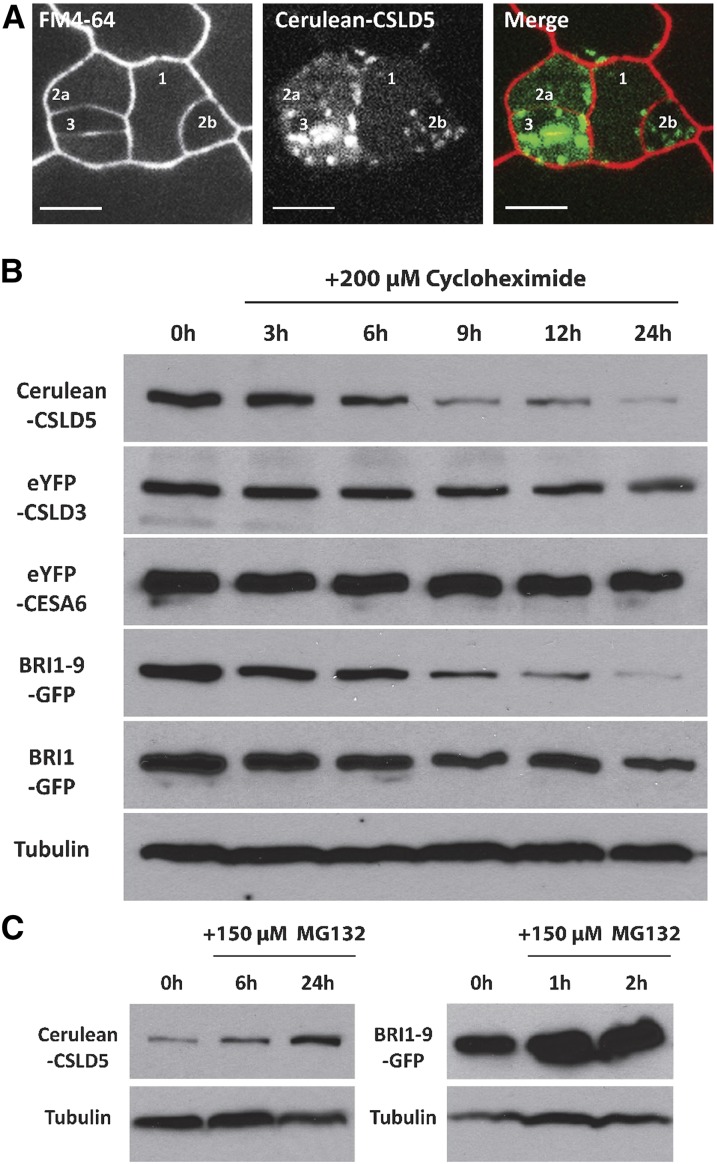Figure 6.
Analysis of the Stability of Cerulean-CSLD5.
(A) Persistence of Cerulean-CSLD5 fluorescence is negatively associated with cell age. In stomatal lineages, where birth order can be surmised by position and morphology, most recently divided cells (guard cells, #3) contain highest CSLD5 fluorescence levels, the second newest cells (#2a and #2b) have intermediate levels of CSLD5, and nondividing SLGCs (#1) have lowest levels of CSLD5.
(B) Protein turnover rates of CSLD and other cellular proteins treated with 200 µM cycloheximide. Total proteins were extracted from 5-d-old seedlings at each time point and the relative levels were determined using immunoblotting with anti-GFP antibodies. Cerulean-CSLD5 levels rapidly decreased during the time course, while levels eYFP-CSLD3 and eYFP-CESA6, two structurally similar proteins, were not significantly reduced. A destabilized mutant of BRI1, BRI1-9-GFP, also displayed rapid protein turnover kinetics, while wild-type BRI1-GFP levels were stable. Tubulin was used as a loading control.
(C) Stabilization of Cerulean-CSLD5 turnover by treatment with MG132. Five-day-old seedlings were grown in media containing 150 µM MG132 for 24 h. The level of Cerulean-CSLD5 was increased after 6 h (left panels). BRI1-9-GFP, which is turned over in a ubiquitin-dependent manner, was also stabilized under these conditions (right panels). Tubulin was used as a loading control.

